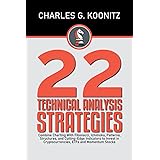The financial world often feels like a giant, intricate chessboard, with every move made by a major player sending ripples across the board. Recently, a significant shift in monetary policy was observed, sparking both excitement and apprehension across global markets, particularly within the dynamic cryptocurrency sector. The video above delves into the implications of the Federal Reserve’s latest decision, providing a crucial overview for anyone holding digital assets.
As discussed, the Federal Reserve has made a pivotal move, initiating what many believe could be a new era for risk assets. However, understanding the full scope of this decision requires looking beyond the headlines. This deeper analysis will explore the nuances of the Fed’s actions, the market’s varied reactions, and the potential bullish and bearish scenarios for the crypto market, especially Bitcoin, in the coming months.
Unpacking the Federal Reserve’s Latest Rate Cut Decision
On September 17th, a significant action was taken by the Federal Reserve’s Open Market Committee (FOMC). They proceeded with an anticipated 25 basis point cut to the US interest rates. This adjustment brought the federal funds rate into a new target range of 4% to 4.25%.
This decision marked the first rate cut of 2025, signaling a notable departure from the sustained holding pattern that had characterized previous Fed meetings. Such a pivot by the central bank is often interpreted as a significant shift in monetary policy, potentially unlocking new economic dynamics.
The Nuance of the FOMC Vote and Powell’s Framing
A closer examination of the FOMC’s decision reveals interesting internal dynamics. The vote was not entirely unanimous, registering at 11 to 1. The lone dissenting vote came from Governor Stephen Miran, who notably advocated for a more aggressive 50 basis point cut rather than maintaining the existing rates.
This dissent underscores a growing dovish sentiment within the Fed itself, suggesting internal pressure for more substantial easing measures. Furthermore, Fed Chair Jerome Powell’s subsequent press conference offered critical context. The decision was carefully framed not as a reaction to a failing economy but as a “risk management cut.”
Powell’s comments highlighted a delicate balancing act. A softening labor market was acknowledged, with “job gains having slowed, and downside risks to employment have risen.” Conversely, inflation was noted as having “moved up and remains somewhat elevated.” This combination is often associated with stagflation, a challenging scenario for central banks, where slowing economic growth is coupled with persistent inflation. Such a macroeconomic environment creates a difficult dilemma for policy makers, impacting their dual mandate of maximizing employment and ensuring price stability.
The Fed’s Dot Plot: A Glimpse into Future Interest Rate Cuts
Perhaps one of the most revealing components of the Fed’s announcement was its updated ‘dot plot’. This anonymous survey provides a forecast from each of the 19 Fed officials regarding future interest rate trajectories. It essentially serves as the Fed’s collective projection for economic conditions.
The September dot plot provided a clear indication: median projections pointed towards two more 25 basis point cuts being anticipated before the conclusion of 2025. This suggests a sustained easing cycle is expected by a majority of the committee. However, even within this consensus, a degree of disagreement was present. Specifically, 10 officials projected two additional rate cuts, while 9 officials foresaw only one more. This split indicates that while a general easing trend is expected, the precise pace and extent of future cuts are subject to ongoing debate and data dependency, reflecting the fragile nature of the consensus.
Immediate Market Reactions to Monetary Policy Shift
Upon the news of the Federal Reserve’s decision, market activity was characterized by pronounced volatility. This was a classic “knee-jerk reaction,” observed across various asset classes, as investors and traders rapidly adjusted their positions and expectations.
The immediate aftermath saw significant price swings, indicating a market grappling with the implications of the new monetary policy direction. These movements are often a blend of algorithmic trading responses and human sentiment, creating a complex short-term trading environment.
Traditional Markets and the Gold Standard
In traditional financial markets, US stocks experienced considerable whipsaw movements. The Dow Jones Industrial Average managed to finish the day higher, signaling some underlying resilience in blue-chip equities. However, the tech-heavy Nasdaq and the broader S&P 500 both registered declines.
This divergence illustrates a market struggling to interpret the news, with different sectors reacting to varied perceived impacts of the rate cuts. Meanwhile, gold, traditionally viewed as an inflation hedge and a safe-haven asset, surged impressively, tapping nearly $3,700 an ounce. This upward movement in gold prices was largely attributed to investors pricing in lower real yields, making non-yielding assets like gold more attractive in an environment of easing monetary policy.
Bitcoin’s Volatility: Navigating the News Cycle
The Bitcoin price action mirrored the broader market’s uncertainty. It displayed a textbook example of volatility often seen around major news events. Initially, Bitcoin’s price spiked, driven by immediate bullish interpretations of easier money conditions. However, this was quickly followed by a drop, as profit-taking and cautious sentiment set in. The price then proceeded to chop sideways, indicating a period of consolidation as the market digested the new information.
Ultimately, Bitcoin finished the day just under 1% down, trading close to $118,000. This level is recognized as a key technical and psychological threshold for many traders. The muted short-term reaction suggests that while the Fed’s decision is significant, its long-term implications for the crypto market are still being debated and priced in by market participants.
Divergent Economic Outlooks: Market vs. Big Banks
While the immediate market reaction offered a snapshot of volatility, the more enduring question pertains to the long-term outlook. Specifically, what do these rate cuts signal for the final quarter of the year and beyond? Views on this matter are notably diverse, reflecting the inherent uncertainty in economic forecasting.
This divergence in opinion between collective market sentiment and major financial institutions highlights the complex nature of interpreting economic signals and their potential impacts on investment strategies.
The Market’s Bullish Bet: CME FedWatch and Analyst Projections
The market’s perspective, as measured by tools like the CME Group’s FedWatch, suggests a strong conviction in continued easing. According to this tool, which gauges market-based probabilities, traders are now pricing in a greater than 70% chance of further interest rate cuts at both the October and December FOMC meetings. This indicates that, in the market’s collective view, an easing cycle has commenced and is expected to be sustained by the Fed.
Adding to this bullish sentiment, prominent investment banks such as Goldman Sachs have aligned their forecasts with market expectations, also penciling in additional rate cuts for October and December. This alignment of a major institutional player with market probabilities reinforces the expectation of a more accommodative monetary environment, potentially beneficial for risk assets.
Wall Street’s Cautionary Voices: Bank of America’s Stagflation Warning
Despite the prevailing market optimism and some institutional alignment, not all major financial institutions share this outlook. Bank of America, for instance, has issued a notable warning, theorizing that the Federal Reserve might not implement further cuts until 2026. Their argument centers on the perceived danger of cutting rates into a stagflationary environment.
The prospect of stagflation, where economic growth slows while inflation remains stubbornly high, presents a formidable challenge for central bankers. Cutting rates in such a scenario could exacerbate inflationary pressures, while holding or hiking rates could further stifle growth. This divergence of opinion among leading Wall Street minds underscores the incredibly high level of uncertainty currently at play. It highlights the Fed’s delicate position, caught between its dual mandate of achieving maximum employment and maintaining price stability, both of which are signaling warning signs. This situation portends continued volatility in the financial markets.
The Bull Case for Crypto: How Rate Cuts Fuel Bitcoin and Altcoins
The prevailing bull case for the crypto market, particularly for Bitcoin and subsequently altcoins, is constructed upon several foundational pillars. These arguments leverage historical economic patterns, the evolving institutional landscape, and expert forecasts to paint a picture of potential significant upside.
The anticipation of continued rate cuts and increased liquidity is a central theme, believed to create a favorable environment for digital assets. Understanding these drivers is key to comprehending the potential trajectory of the crypto space.
The Liquidity Argument and Historical Precedent
One of the most straightforward arguments supporting a bullish outlook is centered on liquidity. Historically, a consistent pattern has been observed: Federal Reserve rate cuts tend to weaken the US dollar. When the return on holding cash decreases, capital typically seeks alternative stores of value that offer better potential returns or act as inflation hedges. This dynamic invariably drives demand for scarce, non-yielding assets. Within the digital realm, there is arguably no asset scarcer than Bitcoin.
This is not merely theoretical; historical data supports this premise. During the 2020-2021 easing cycle, a period characterized by significant monetary accommodation, Bitcoin experienced an extraordinary surge, increasing by over 1,000%. This precedent provides a compelling historical example of how an accommodative monetary policy can act as a powerful tailwind for digital assets.
Institutional Firepower: The ETF Effect on Digital Assets
A critical factor distinguishing the current cycle from previous ones is the unprecedented level of institutional involvement. The introduction of US spot Bitcoin ETFs has significantly altered the market structure. Following a brief period of lull, these ETFs are now witnessing a return in net inflows, signaling renewed institutional interest and capital deployment.
Recent regulatory filings further illustrate this trend, showing that major financial players, including Goldman Sachs, have become among the largest holders of BlackRock’s iBit ETF, with over 30 million shares reported. This systematic allocation of capital by the world’s deepest pools of wealth is fundamentally different from retail-driven FOMO (Fear Of Missing Out). This institutional bid establishes a robust floor under the market, a structural support that was simply absent in earlier cycles, potentially reducing downside risk while amplifying upside potential for digital assets.
Leading Crypto Analysts Predict Significant Gains
Against this backdrop of easing monetary policy and increasing institutional adoption, several prominent analysts have issued highly optimistic forecasts for Bitcoin. Marshall Beard, the CEO of Gemini, and Tom Lee of Fundstrat, both widely recognized figures in the financial and crypto sectors, are predicting Bitcoin to reach $150,000 by the end of the year. This reflects a strong belief in the ongoing market momentum and the impact of macro factors.
Even more bullish, analysts at Bernstein have raised their target to $200,000 for the same period. Such high-profile predictions from respected sources underscore the growing conviction that Bitcoin is poised for substantial appreciation, driven by a confluence of favorable conditions including institutional inflows and the macro liquidity environment.
The Rise of Altcoin Season: Capital Flows Down the Risk Curve
As Bitcoin continues to stabilize and potentially grind higher, supported by institutional flows and easier money policies, a natural progression often occurs: capital begins to migrate further down the risk curve in search of higher returns. This phenomenon typically heralds the arrival of an ‘altcoin season’. In such a period, significant capital is allocated to various alternative cryptocurrencies, leading to their outperformance relative to Bitcoin.
Indeed, signs of this are already being observed within the crypto market. The Altcoin Season Index recently achieved a reading of 80, its highest level of 2025. This index reaching such a level signifies that a majority of large-cap altcoins are currently outperforming Bitcoin, indicating that the broader crypto ecosystem is beginning to benefit from the liquidity surge and positive investor sentiment. This suggests a potential diversification of gains across the wider digital asset landscape, moving beyond just Bitcoin.
Navigating the Downside: Key Risks for the Crypto Market Ahead
While the bullish narrative surrounding rate cuts and institutional adoption is compelling, a prudent investment approach necessitates a thorough examination of potential risks. The crypto market, known for its inherent volatility, remains susceptible to various macroeconomic headwinds and internal vulnerabilities. Ignoring these potential pitfalls could invalidate even the most optimistic forecasts.
Understanding these downside scenarios is crucial for effective risk management and for developing a resilient investment strategy.
The Bitcoin Correlation Trap: A Double-Edged Sword
One of the primary risks identified for Bitcoin is what is termed the “correlation trap.” Over the past year, Bitcoin’s correlation with the Nasdaq 100 Index has reached levels as high as 87%. In practical terms, this means Bitcoin is increasingly trading less like a “digital gold” or an independent store of value and more like a high-beta technology stock. While this correlation can be beneficial during periods when risk assets, particularly tech stocks, are rallying, it represents a double-edged sword.
If the broader stock market, especially the Nasdaq, experiences a significant correction or downturn, Bitcoin is highly likely to follow suit, and potentially with even greater intensity. This challenges the long-held narrative of Bitcoin as a safe haven, suggesting that its price movements are increasingly intertwined with traditional equity markets, making it vulnerable to broader economic sentiment shifts.
The Stagflation Nightmare: A Central Bank’s Dilemma
A second, and perhaps more significant, risk lies in the potential for a stagflationary nightmare. This scenario unfolds if economic growth continues to decelerate while inflation remains persistently high. In such an environment, the Federal Reserve would find itself in an unenviable trap. Cutting interest rates further would risk exacerbating inflationary pressures, potentially leading to runaway price increases.
Conversely, holding or even hiking rates to combat inflation would risk pushing the economy into a deeper recession and severely impacting the jobs market. This represents a worst-case scenario for risk assets, including cryptocurrencies. In a stagflationary environment, corporate earnings would be severely pressured due to higher costs and reduced consumer spending, leading to a souring of investor sentiment across the board. Given Bitcoin’s high correlation with the Nasdaq, it would not be immune to such a downturn, likely experiencing significant price depreciation alongside traditional equities.
Black Swan Scenarios: Global Debt and Leveraged Crypto Vehicles
Beyond the immediate macroeconomic concerns, the world economy is always exposed to unforeseen “black swan” risks. A significant underlying vulnerability is the staggering amount of global debt, which currently stands at over $300 trillion. This colossal debt burden creates systemic fragility, where unexpected economic shocks or liquidity crises could have far-reaching and devastating consequences across all financial markets.
Within the crypto market itself, a relatively new but concerning risk has emerged: the proliferation of newly established Bitcoin treasury companies. These entities typically borrow heavily in US dollars to purchase Bitcoin, operating on a business model that is viable only as long as Bitcoin’s price continues to climb. Should Bitcoin’s price experience a sustained decline, an unwind in these highly leveraged positions could force these companies to sell their substantial digital asset holdings. Such a forced liquidation could trigger a downward spiral, pushing Bitcoin prices even lower and exacerbating market instability, especially if multiple such entities are affected simultaneously.
The Federal Reserve has indeed pivoted, opening the door to an easier monetary policy that historically has served as a powerful tailwind for Bitcoin and the broader crypto market. The current landscape is further bolstered by unprecedented institutional adoption through ETFs, providing a structural bid that was absent in prior cycles. While the path of least resistance for crypto may now be higher, it is crucial to anticipate volatility. The key for investors will be to integrate a nuanced understanding of these fundamental macroeconomic shifts with robust technical analysis and unwavering risk management strategies.







